For various purposes, you may need to insert horizontal lines in Word documents from time to time. You may need to separate a section, you may need to add a long underline to the title, etc. You may also know that typing 3 hyphens (- – -) and pressing Enter inserts a standard horizontal line in the document. However, if you're tired of using the same old horizontal lines all the time in your documents, you might want to try your own custom horizontal lines. Or even simpler, insert the built-in horizontal lines that Excel already has.
No matter what your requirements are, we have them all covered. If you must frequently insert horizontal lines into your documents, we've also detailed how to assign keyword shortcuts to horizontal lines! So, let’s jump right into the article, shall we?
Part 1: How to Insert a Built-in Horizontal Line Using the Border Option
Step 1: First, clickthe point where you want to insert the horizontal line.
Now click on the HOME tab at the top.
Next, under the Paragraph section, click the Borders icon and select the Borders and Shading option.

Step 2: In the Borders and Shading window, make sure you are in the Borders" tab.
From the Style options list, select the built-in border of your choice.
You can change the color of the border using the Color drop-down menu.
Now from the Width drop-down menu, select the width of your choice.
In the right pane, under the "Preview" section, make sure the bottom border icon is the only active icon.
After all is completed, click the OK button at the bottom.

Step 3: That’s it. Your built-in border is now inserted successfully.

Note: Built-in borders are easy to insert, but difficult to delete, because the delete key will not delete borders inserted using this method. If you want to know how to remove borders inserted using this method, you can read our article on the topic How to Insert and Remove Horizontal Lines in Microsoft Word.
Part 2: How to Insert Custom Horizontal Lines Using Symbols and Characters
In the above section, we detailed how to insert the built-in horizontal lines in Word documents. But if you want to insert your own custom horizontal lines, there is a way. The following steps pave the way to achieving this goal!
Step 1: Click anywhere on the Word document where you want to insert a custom horizontal line.
Now, click on theInsert tab on the top ribbon.
Under theINSERT tab options, click the drop-down menu named Symbols, and then click the Symbol drop-down menu.
At the bottom of the list of available symbols, click the optionMore symbols.

Step 2: From the list of available symbols, click the symbol you want to create a horizontal line, then click "Insert" button.

Note: By default, the font type is set to normal text. But you can change the Font type to Webdings or Wingdings or any other font to see many other symbols and characters.
Step 3: You can insert any number of symbols in a similar manner.
Don’t forget to click theInsert button every time you select a symbol. Also, once you're done, click the Close button.

Step 4: In the following example, I created a pattern using the symbols I inserted in the previous step. I will now copy and paste this pattern to form a complete horizontal line. To copy and paste the pattern you create, press the CTRL C keys simultaneously, and then the CTRL V keys simultaneously.
Note: Remember that you can also enter characters from the keyboard between inserted symbols. Additionally, you can select the Font style options available under the Home tab. You can change the width of the pattern, you can change the color, etc.

Step 5: Once the pattern repeats, it will be a complete line as shown in the screenshot below.

Part 3: How to insert horizontal lines by specifying shortcuts
Of course, if you want to insert multiple lines in a Word document, follow the instructions in Section 2 above With all the steps detailed, inserting one horizontal line at a time would be very time consuming and definitely not the first choice. But what if you could use a keyword and press Enter to insert a horizontal line, either built-in or custom? Yes, it's more like assigning a shortcut key to each horizontal line. Sound cool? continue reading.
Step 1: Start by inserting the row once using one of the methods detailed in the sections above.
If the row you want to assign a shortcut key to is a built-in horizontal line that you inserted using section 1, just click on its initial part to select The line is shown in the screenshot below. Next click on the File tab at the top.

Alternatively, if you followed the steps detailed in Section 2 to insert a custom line, click and drag to Select the entire horizontal line as shown below.
After selecting the row, click the "File" tab in the top ribbon.

Step 2: Now, in the left pane of the window, click on Options.

Step 3: In the left pane of the Word Options window, Click "proof".
In the right pane, click the AutoCorrect Options button under the section with the same name.

Step 4: Make sure you are on the AutoCorrect tab first.
Now, at the bottom of the "AutoCorrect" option, under the "Replace" section, type your preferred keyword## for the selected horizontal line #, as shown in the screenshot below. In the example below, I specified the shortcut keyword for the horizontal line as theGeekPage1. Once done, click the Add button.
Click theOK button at the bottom to continue.

Word Options window, click the OK button.
Step 5: Now you will be in your Word document again. Enter the keyword you want to assign to for the horizontal line and press Enter.
Note: Keywords are not case sensitive. This means that Word treats thegeekpage1 and theGeekPage1 the same way.

Step 6: Viola! A horizontal line is now magically inserted, replacing your shortcut keyword.

Step 7: Likewise, you can select any horizontal line and assign any keyword as per your choice, except reserved keywords.
In the example screenshot below, I have assigned the keywordline1 to another line.

Step 8: Now, try typing Line1 and press Enter key.

Step 9: Of course, the allocated row is inserted! enjoy!

The above is the detailed content of How to insert built-in and custom horizontal lines in Word documents. For more information, please follow other related articles on the PHP Chinese website!
 Microsoft Teams 不显示图像?怎么修Apr 16, 2023 am 10:28 AM
Microsoft Teams 不显示图像?怎么修Apr 16, 2023 am 10:28 AM解决 Microsoft Teams 无法加载或显示图像的问题的 10 种方法如果您收到的图像无法在 Microsoft Teams 中加载,并且您看到的只是一个图像图标,而不是实际图像应加载到的位置,那么以下修复程序应该可以帮助您解决此问题。修复 #1:检查您的互联网连接当您遇到无法在 Microsoft Teams 上加载图像时要检查的第一件事是查看您的计算机是否已连接到有
 属性中没有位置选项卡:如何启用它Apr 13, 2023 pm 11:16 PM
属性中没有位置选项卡:如何启用它Apr 13, 2023 pm 11:16 PM文件夹属性为用户提供详细信息,例如创建日期、文件夹名称、大小等。但是,有时您可能会在Windows文件夹的属性中遇到“位置”选项卡。因此,我们将引导您完成故障排除和重新启用它的步骤。或者,您可以查看我们关于修复 Windows 11 上的文件夹访问被拒绝问题的详细指南。为什么在文件夹属性中找不到位置选项卡?有几个因素可能导致 Windows 11 上文件夹属性中缺少位置选项卡。最值得注意的是:文件夹不支持移动 – 有些文件夹支持移动到另一个位置,而有些则不支持。默认情况下,支持从一个位置移动到另
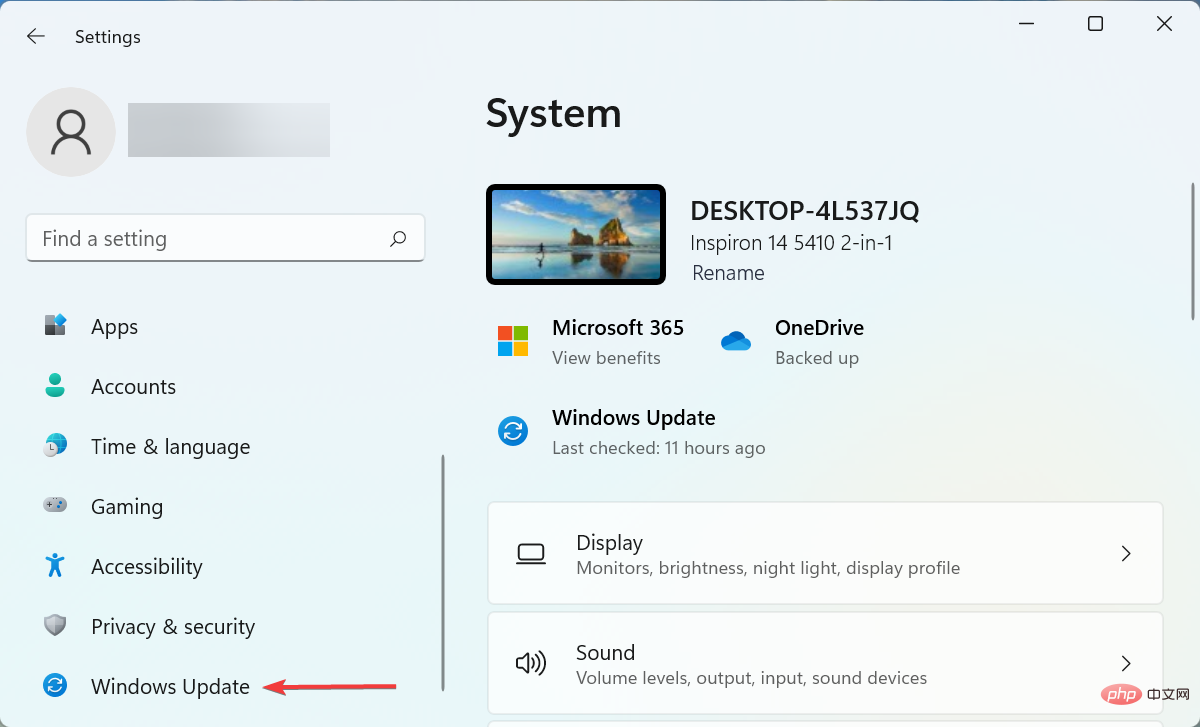 如果设备管理器中缺少电源管理选项卡,则进行 7 个修复Apr 14, 2023 pm 07:04 PM
如果设备管理器中缺少电源管理选项卡,则进行 7 个修复Apr 14, 2023 pm 07:04 PM设备管理器是Windows中列出所有连接设备的实用程序。此外,您可以在此处识别有问题的硬件并对其进行故障排除,甚至可以更改电源设置。但是,对于某些用户,设备管理器中缺少电源管理选项卡。这可能由于多种原因而发生,并且由于无法进行更改而可能会影响您的体验。在这种情况下,您将无法配置系统如何控制设备的电源以及设备是否可以唤醒PC。因此,请阅读以下部分以了解如果Windows11的设备管理器中缺少电源管理选项卡该怎么办。如果设备管理器中缺少电源管理选项卡,我该怎么办?1.更新Windows按Wind
 如何解决 Windows 10 中的 Rundll32.exe 错误Apr 14, 2023 pm 04:25 PM
如何解决 Windows 10 中的 Rundll32.exe 错误Apr 14, 2023 pm 04:25 PMRundll32.exe文件是一个系统进程文件,与Windows10的功能相关。它使用DLL(动态链接库)库,该库包含在Windows系统上一次运行的多个程序重复使用的代码。代码的重复使用有时可能会导致错误。此问题的主要原因是删除了rundll32.exe文件、损坏的DLL文件、Windows注册表中不正确的DLL条目等。在本文中,我们将了解发生了哪些不同类型的rundll32.exe错误以及如何处理解决这些问题。用户面临的不同Rundll32.exe错误发生run
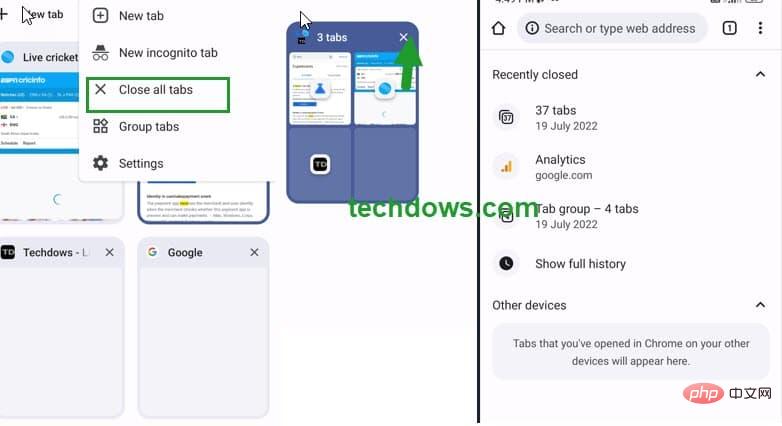 Android 上的 Chrome 现在可让您一次恢复所有关闭的标签页Apr 15, 2023 pm 03:25 PM
Android 上的 Chrome 现在可让您一次恢复所有关闭的标签页Apr 15, 2023 pm 03:25 PMAndroid上的Chrome用户现在可以通过转到“最近的标签和最近关闭的”部分轻松地批量恢复最近关闭的 标签和标签 组。该功能现在可用。以下是如何轻松启用和恢复所有关闭的选项卡的方法。桌面上的 Chrome 可以更轻松地恢复旧选项卡,因为它会在主菜单的历史记录子菜单中的最近关闭下显示它们。您不仅可以检索包含选项卡的窗口,还可以检索选项卡组。这是从以前的 session 中调用
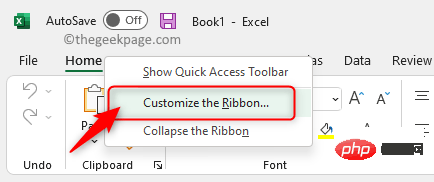 如何在 Microsoft Excel 中显示开发人员选项卡Apr 14, 2023 pm 02:10 PM
如何在 Microsoft Excel 中显示开发人员选项卡Apr 14, 2023 pm 02:10 PM如果您需要录制或运行宏、插入 Visual Basic 表单或 ActiveX 控件或在 MS Excel 中导入/导出 XML 文件,则需要 Excel 中的“开发人员”选项卡以便轻松访问。但是,默认情况下,此开发人员选项卡不会显示,但您可以通过在 Excel 选项中启用它来将其添加到功能区。如果您正在使用宏和 VBA 并希望从功能区轻松访问它们,请继续阅读这篇文章。在 Excel 中启用开发人员选项卡的步骤1. 启动MS Excel应用程序。右键单击顶部功能区选项卡之一的任意位置,然后在出现
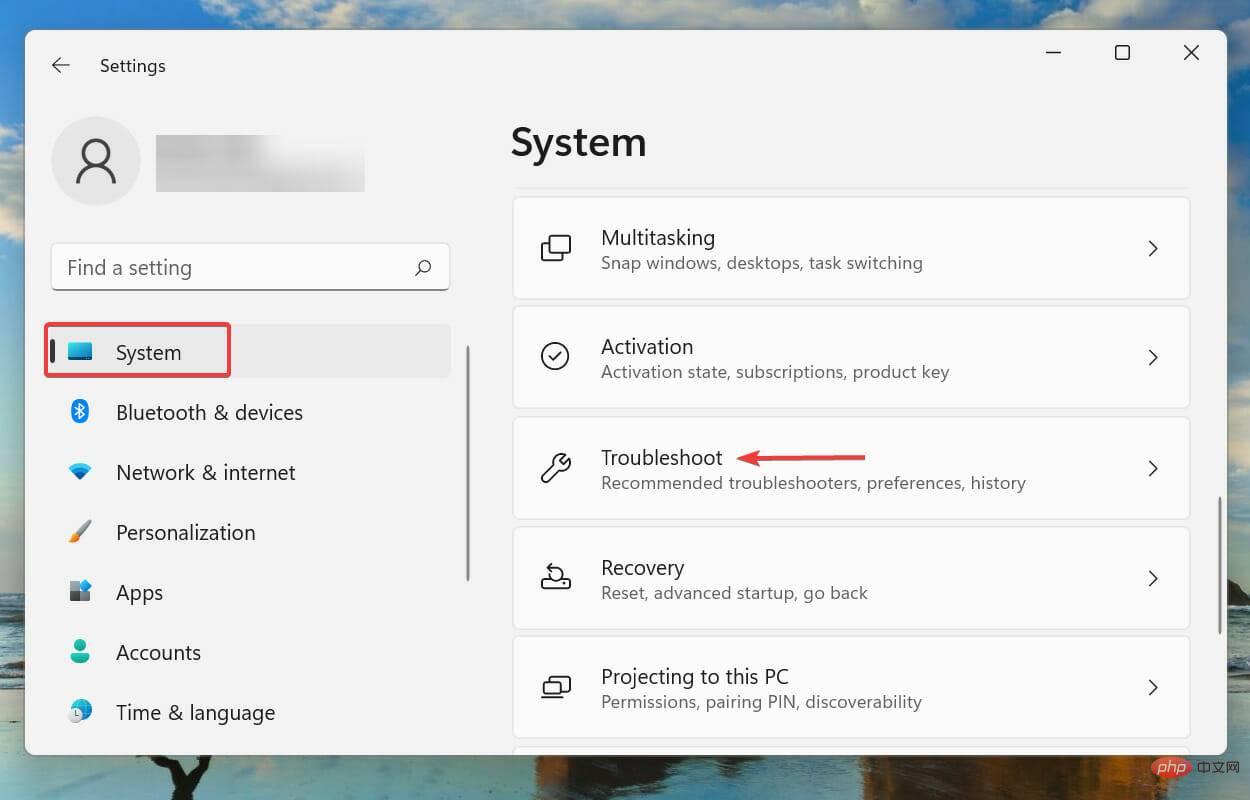 杜比全景声在 Windows 11 中不起作用?立即修复Apr 16, 2023 pm 09:31 PM
杜比全景声在 Windows 11 中不起作用?立即修复Apr 16, 2023 pm 09:31 PM如果杜比全景声在Windows11中无法运行,我该怎么办?1.运行内置音频疑难解答按Windows+I启动“设置”应用程序,然后单击“系统”选项卡右侧的“疑难解答”。接下来,单击“其他疑难解答”。找到并单击播放音频疑难解答旁边的运行按钮。等待疑难解答程序检测到问题,然后按照屏幕上的说明修复错误。每当处理Windows中的错误时,建议您首先为其运行相关的内置疑难解答程序(如果存在)。众所周知,这些可以以最少的努力解决大量问题。2.更新Windows11按Windows+I启动“设置”应用,然后
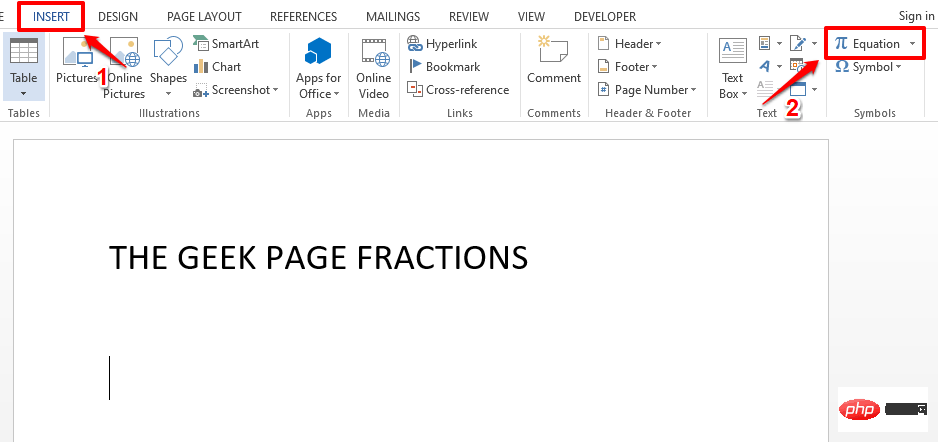 如何在 Microsoft Word 中写分数Apr 13, 2023 pm 02:04 PM
如何在 Microsoft Word 中写分数Apr 13, 2023 pm 02:04 PM我们都知道 Microsoft Word 非常灵活,并且具有许多功能。最重要的是我们知道如何充分利用 Microsoft Word 提供的功能。其中一个令人惊奇的功能是在您的 Word 文档中插入一个分数值。许多地方都使用分数。但是当我们在 Word 文档中插入分数时,它的格式并不总是像分数一样。在本文中,我们通过一些非常简单的步骤解释了如何轻松地将格式良好的分数数字插入到 Microsoft Word 文档中。继续阅读,了解如何轻松掌握这个超级方便的 Word 技巧。在 Microsoft W

Hot AI Tools

Undresser.AI Undress
AI-powered app for creating realistic nude photos

AI Clothes Remover
Online AI tool for removing clothes from photos.

Undress AI Tool
Undress images for free

Clothoff.io
AI clothes remover

AI Hentai Generator
Generate AI Hentai for free.

Hot Article

Hot Tools

SublimeText3 English version
Recommended: Win version, supports code prompts!

Zend Studio 13.0.1
Powerful PHP integrated development environment

Atom editor mac version download
The most popular open source editor

MinGW - Minimalist GNU for Windows
This project is in the process of being migrated to osdn.net/projects/mingw, you can continue to follow us there. MinGW: A native Windows port of the GNU Compiler Collection (GCC), freely distributable import libraries and header files for building native Windows applications; includes extensions to the MSVC runtime to support C99 functionality. All MinGW software can run on 64-bit Windows platforms.

Dreamweaver Mac version
Visual web development tools






